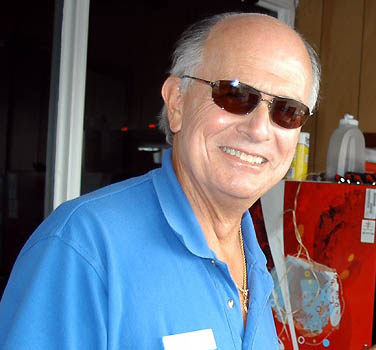 |
| (DRO file photo) |
![]() : You have seen many great races in your career. Is there one that sticks out in your memory?
: You have seen many great races in your career. Is there one that sticks out in your memory?
SE: The NHRA World Finals at Ontario in 1975. I loved that part of California in those days. Ontario Motor Speedway was in the middle of vineyards and surrounded by what I call “old” California. Garlits ran the first 250 pass, 250.69, Snake won Funny Car, Bob Glidden won Pro Stock and Dale Armstrong won Pro Comp. The awards banquet was Sunday night after the race at the Griswold’s Inn, very rustic and very old California with maybe 150 to 200 people in attendance. Drag racing was a lot of fun in those days and we had some real characters.
![]() : Do you feel that drag racing is truly a major league sport on par with NASCAR, baseball and other sports? If not, what can be done to move drag racing into the big leagues?
: Do you feel that drag racing is truly a major league sport on par with NASCAR, baseball and other sports? If not, what can be done to move drag racing into the big leagues?
SE: No. Let’s not kid ourselves. Back when we were in every major newspaper with national event results and had a feature story most years in Sports Illustrated (a goal Densy and I imposed on ourselves) the perception was that we were a pretty big deal. That was back when we had 10 to 12 national events annually and NASCAR was perceived as a regional series. We didn’t have near the competition in all the other drag racing series and in professional sports as a whole. Today, our national series is lost in the vast wasteland. Courtney Force wins the Winternationals and doesn’t even make USA Today on Monday. Breaks my heart to see the lack of coverage of our sport.
![]() : You have had a long a successful career. What do you consider your greatest contribution to the sport?
: You have had a long a successful career. What do you consider your greatest contribution to the sport?
SE: Not sure I’ve contributed anything, although I’m still trying. I have always tried to treat folks fairly although some are determined to not the follow the rules. You have them everywhere. I call them the three-percenters: the 3% of the people who create 80% of the problems. You’ll never please them. I’m proud of some legislation I have helped pass concerning our sport as Chairman of the North Carolina Motorsports Association. Our tow rigs can now securely travel in the state up to 95 feet in length, increased by law from 65 feet. We were able to get that law changed, along with getting some additional tax incentives for our professional racers.
![]() : Is there something that you would like to accomplish in the sport that you haven't yet done?
: Is there something that you would like to accomplish in the sport that you haven't yet done?
SE: Well, I’ve been at Rockingham for 22 years and I’ve seen several of my competitors come and go. Surviving at this is quite an accomplishment. I would like to pass this place on to my wonderful daughter, Stephanie, and her husband, Jason Peterson. They currently operate US 131 in Martin, Michigan, and do an outstanding job.
![]() : How would you like to be remembered in the history of the sport?
: How would you like to be remembered in the history of the sport?
SE: Heck, I don’t know. Maybe I’d just like for people to remember me as someone who tried to give back more than he took. ![]()


